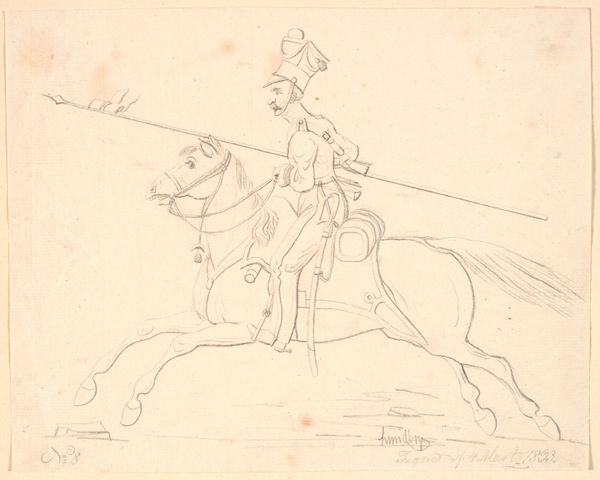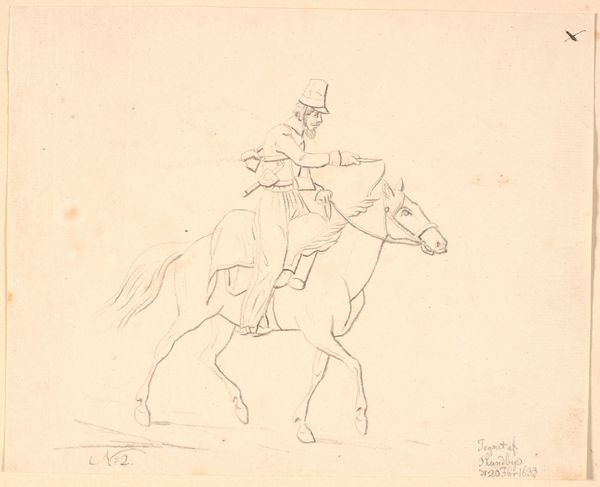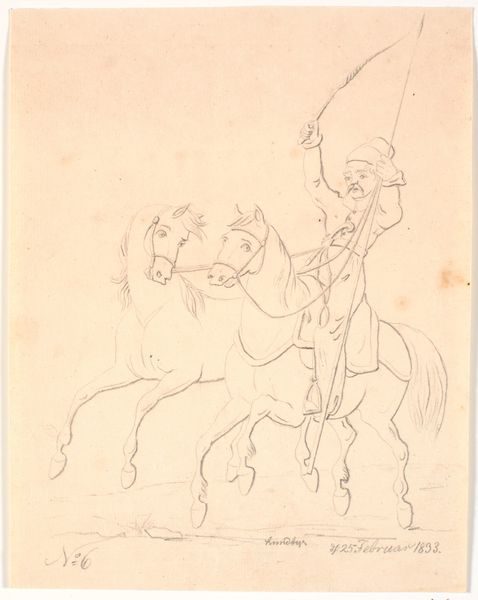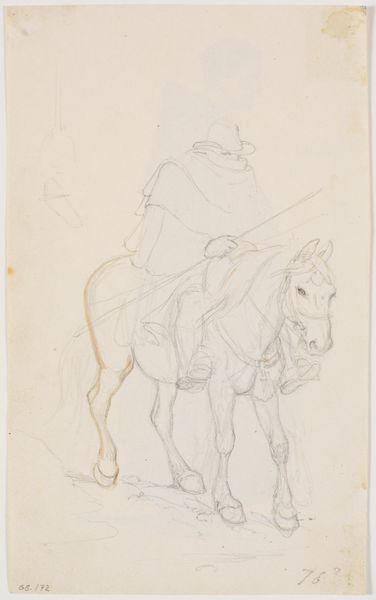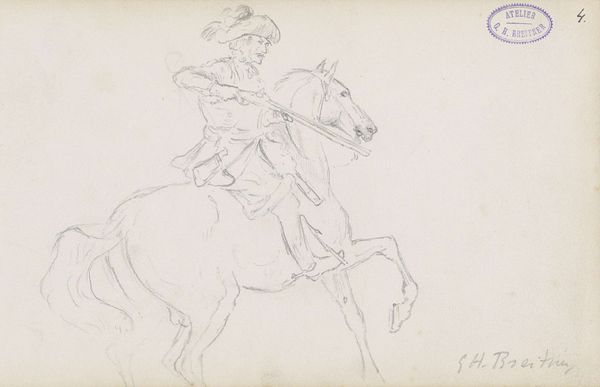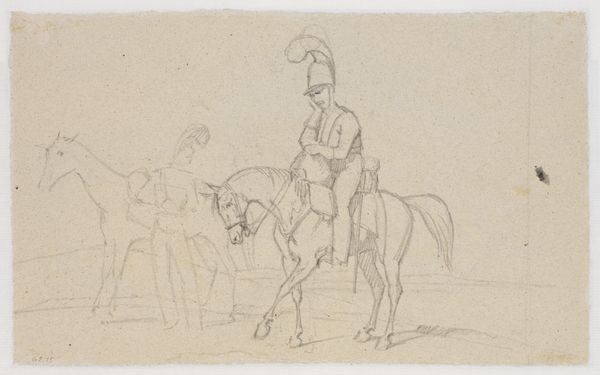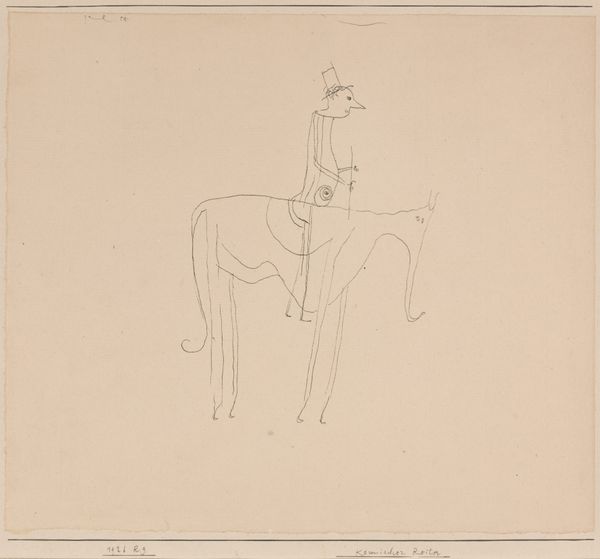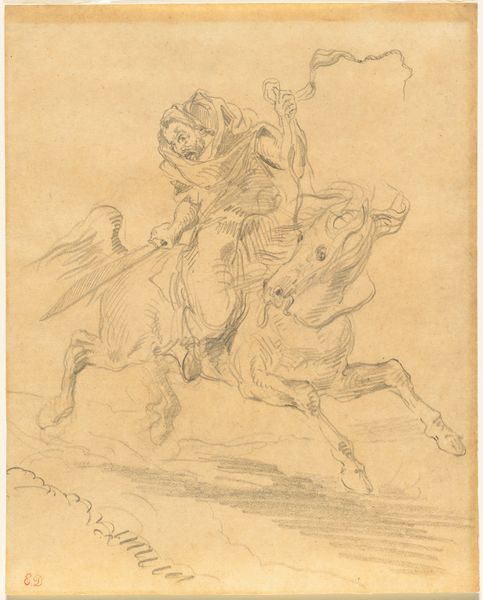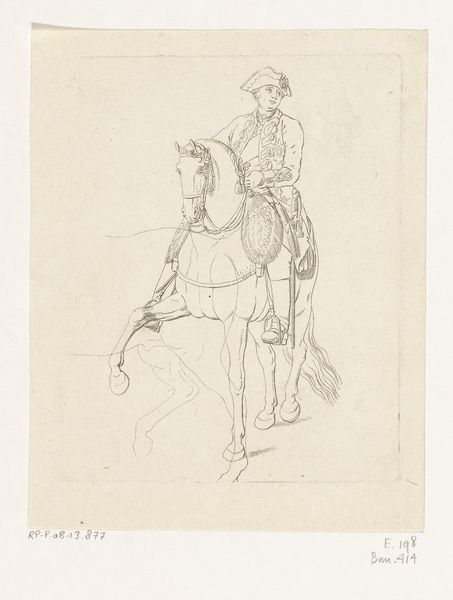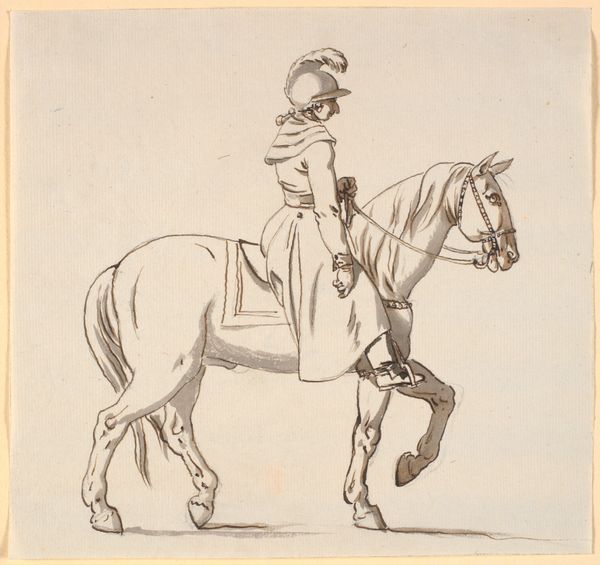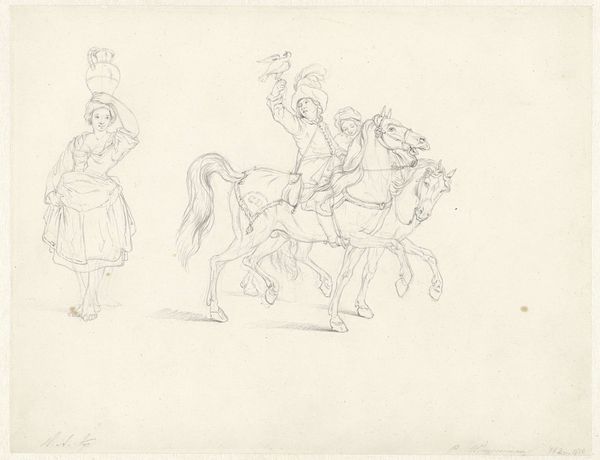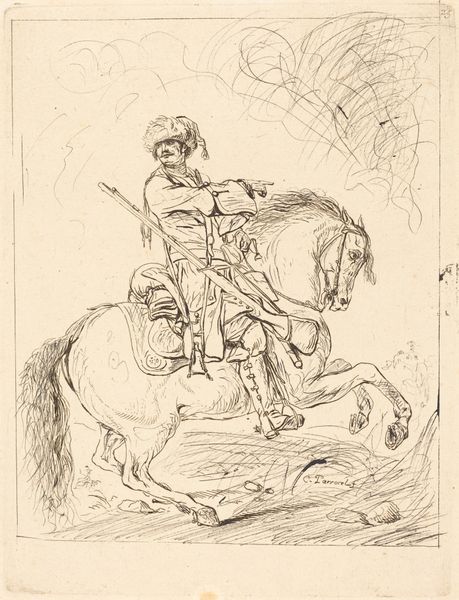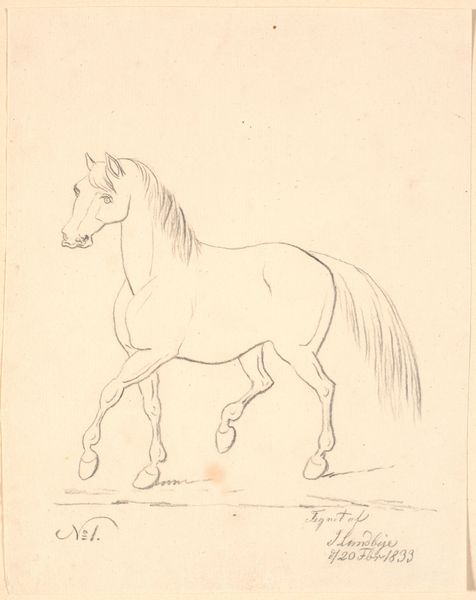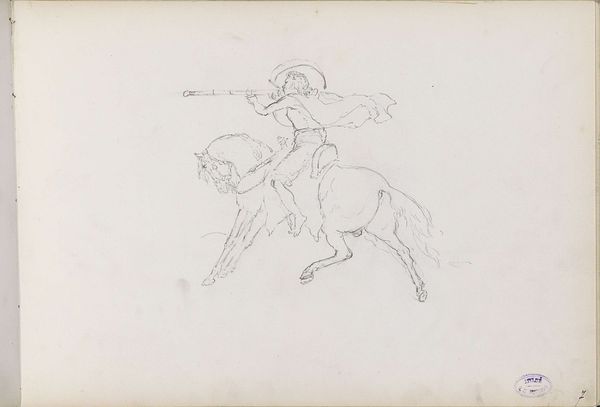
drawing, pencil
#
portrait
#
drawing
#
landscape
#
figuration
#
romanticism
#
pencil
#
line
Dimensions: 204 mm (height) x 161 mm (width) (bladmaal)
Curator: This is a pencil drawing entitled "Soldat til hest, vendt mod venstre" by Johan Thomas Lundbye, created in 1844. It depicts a soldier on horseback, turned to the left. Editor: It’s interesting how delicate the lines are; it almost gives the figure a sense of impermanence. The drawing style reminds me a little of an architectural rendering, all very clean and precise, but also strangely dreamlike. Curator: Lundbye, known for his landscapes, imbues even this military subject with a sense of Romantic sensibility. Consider the period. What underlying sentiments or social tensions might be represented in the artist's choices? Editor: Precisely. It makes me think about the power dynamics represented. The erect soldier atop the rearing horse —symbols of dominance, strength and masculinity, set against what could be a contested landscape. It also brings up questions around class and the role of the military at the time, particularly with the rise of nationalist sentiments in Europe. Curator: Notice the subtle use of hatching to suggest volume and shadow, lending a touch of dynamism to what is ostensibly a simple sketch. How might the symbolism of the horse play into interpretations of power, and masculine identity? Editor: The horse, so central to European military imagery for centuries, is both a tool and a symbol of status, privilege, and brute force. What is revealed—or concealed—when the machinery of war is captured through such an intimate, almost fragile medium as pencil on paper? Lundbye softens the idea of war... it becomes delicate instead. Curator: It's compelling to see how Lundbye marries this attention to detail with what is essentially a symbol of power and perhaps even violence. What cultural tensions can we read through the artwork itself? Editor: The work seems to reveal a moment in transition. We are poised between classical heroic depictions and perhaps the disillusionment of modernity. In an era defined by national pride, can an artist capture both its allure and latent anxieties in so few lines? Curator: Absolutely, and thank you, that helps me consider the work more completely. Editor: Likewise. It is these kinds of visual relics of history that can really spark an interesting discussion.
Comments
No comments
Be the first to comment and join the conversation on the ultimate creative platform.
